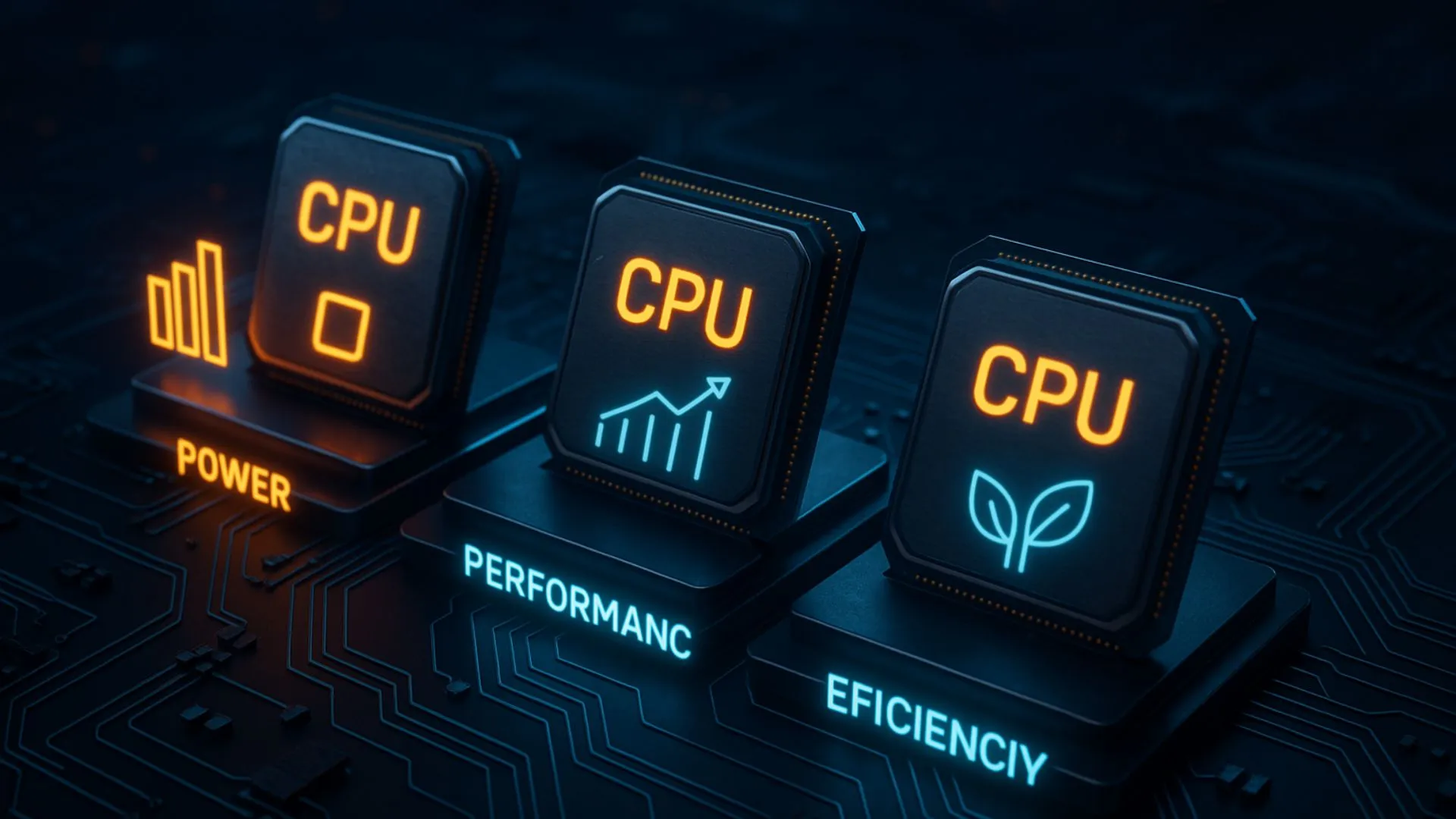The 3 Most Used Processors in 2025: Power, Performance and Efficiency
Discover the 3 most popular processors in 2025, their key features in power, performance, and efficiency, and how to choose the ideal one for your technology…

In 2025, the technological world continues to advance by leaps and bounds, and one of the fundamental components of any device is the processor. Choosing the right processor can make a huge difference in overall performance, energy efficiency, and the ability to handle complex tasks. The three most popular processors in 2025 combine power and efficiency to meet the demands of users ranging from gamers to design professionals.
The importance of having the right processor lies in the fact that it not only improves execution speed but also optimizes energy consumption, extending the equipment's lifespan and providing a smooth user experience. Understanding these leading processors allows users and businesses to make informed decisions to maximize their technology investment.
Definition and function of the most used processors in 2025
A processor, also known as a CPU, is the brain of any electronic device, responsible for interpreting and executing instructions. By 2025, processors had evolved to include multiple cores, greater energy efficiency, and integrated artificial intelligence capabilities, making them more versatile and powerful.
As a writer and technology expert, I've observed that modern processors not only improve raw performance, but are also key to sustainability and energy savings in high-performance devices.
Common signs or symptoms that indicate the need for a powerful processor
- Slow multitasking: When the processor cannot handle multiple applications at the same time, the computer becomes slow, affecting productivity.
- Frequent overheating: An inadequate processor can generate excessive heat, compromising system stability.
- High battery consumption: In mobile devices, an inefficient processor reduces battery life.
Common causes of limited processor performance
Cause 1: Obsolete architecture
Processors with older architectures cannot efficiently handle modern applications. This is detected through benchmark analysis and by observing incompatibilities with recent software.
Cause 2: Insufficient number of nuclei
Processors with few cores limit the ability to run tasks in parallel, affecting multitasking. This can be verified in the device's technical specifications.
Cause 3: Low clock frequency
A reduced clock frequency limits processing speed. This can be identified using system monitoring tools during the execution of demanding tasks.
Step-by-step solutions to optimize processor performance
It is important to follow these steps carefully to avoid damage to the equipment.
- Step 1: Update your operating system and drivers to improve compatibility and optimization. Tools such as Windows Update or official manufacturer software are recommended. Estimated time: 30-60 minutes.
- Step 2: Clean up software and background processes that are unnecessarily consuming resources. Use the Task Manager to monitor and close processes. Check for performance improvements after the cleanup.
- Step 3: If performance remains insufficient, consider upgrading your processor or hardware. Stop and contact a professional if you lack hardware experience.
Quick alternatives
- Option A: Use optimization software. Pros: quick and easy; Cons: limited results and potential security risks.
- Option B: Change power settings to prioritize performance. Pros: immediate improvement; Cons: increased energy consumption.
Costs and when to call a technician
The cost of upgrading or repairing a processor ranges from $150 to $600 USD, depending on the model, brand, and complexity of the installation. Factors such as motherboard compatibility, the need for thermal paste, or other modifications influence the price.
You should call a technician if the equipment shows signs of persistent overheating, recurring failures, or if you lack experience making hardware changes to avoid irreparable damage.
Common mistakes to avoid
- Do not check the processor's compatibility with the motherboard before purchasing.
- Ignoring heat dissipation recommendations can cause overheating.
- Performing updates without backing up important data.
Preventive maintenance (checklist)
- Update drivers and operating system - every 3 months.
- Clean the fan and heatsink of dust - every 6 months.
- Monitor temperatures and performance - monthly.
Frequently Asked Questions
Which is the most powerful processor in 2025? Currently, processors with advanced architecture and multiple cores, such as the AMD Ryzen 9 7950X and the Intel Core i9-13900K, lead in power.
Is it necessary to change the processor to improve performance? Not always; sometimes optimizing the system and updating software is enough.
How does the processor affect battery consumption? Efficient processors manage power better, extending battery life.
Resources and references
- AMD Ryzen 7000 Series Official Website
- Intel Core i9 Product Specifications
Conclusion
The three most popular processors in 2025 represent an ideal balance of power, performance, and efficiency, adapting to the current needs of users and professionals. Understanding their features will allow you to make informed decisions to enhance your technological experience. Don't wait any longer and evaluate which of these processors best suits your requirements to take your computer to the next level.
If you need personalized advice or want to perform a safe upgrade, don't hesitate to contact a hardware specialist.